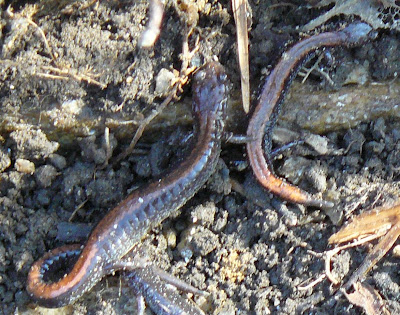

Red-backed salamanders feed on a large variety of invertebrates. These include mites, spiders, insects, centipedes, millipedes, beetles, snails, ants, earthworms, flies, and larvae. They forage by thrusting out their tongue in a quick, forward motion and capturing the prey.
Red-backed salamanders become sexually mature (able to mate) in approximately two years. Males mate every year and females mate once every other year.
Red-backed salamanders lay eggs that develop directly into small salamanders. They do not have an aquatic larva stage, such as is found in other salamanders and most amphibians.















